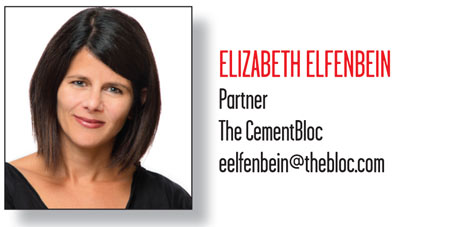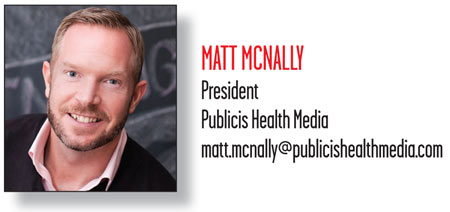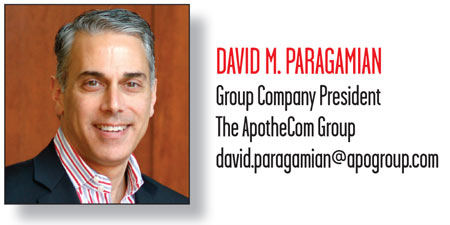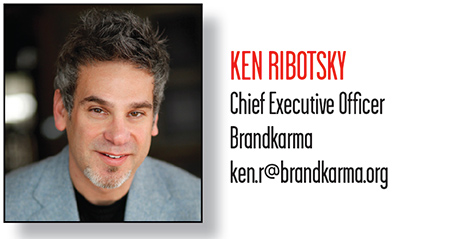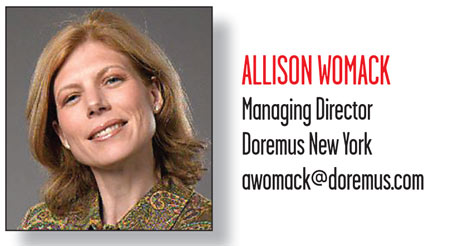Marketers are always looking for new ways to increase brand engagement with their target audience—whether it is through a new channel or just an innovative strategy. PM360 enlisted the help of healthcare branding experts to learn what new and exciting methods are out there to help your brand. We also asked them how you can get your brand to stand out in a crowded marketplace, what role the customer should play in developing a brand strategy in this new patient-centric world, and how developing a branding strategy has evolved over the past few years.
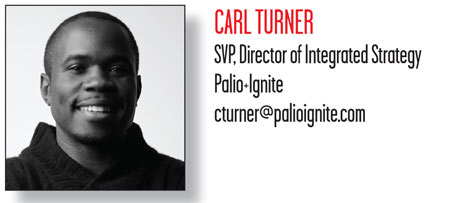
The fundamentals of creating a brand never change. They continue to underscore the need for a key insight, a brand differentiator, a positioning idea, and a path leading the audience to experience and understand the brand. Although the principles of a brand strategy remain the same, new channels and forms of communication push strategy to build better bridges between brands and audiences.
Brands used to focus on delivering a key message. The message was meant to engage and persuade an audience to consider the brand. Brands needed their message to stand out above all competing messages. The amount of advertising snowballed and audiences became annoyed by brands. Brands reacted by creating more disruptive ads. Some brands still use this style of communication. They seek to amplify their messages in a one-way form of communication, which may have success in capturing interest but leaves its audience unaware of its benefits.
Today’s brands are beginning to recognize the power of connecting. Connecting assumes a two-way understanding between a brand and its audience. It presumes a brand is seeking a long-term relationship with its audience. Connecting supposes that a brand attempts to service the audience’s needs in a consistent fashion. Brands that connect build relevant and valued experiences that deliver on audience needs at the right place and time.
In the next few years, brands will seek deeper connections with audiences. This will result in the need for deeper psychological and lifestyle insights. The use of observational research techniques, such as ethnography, will increase and unearth new opportunities to serve audiences. Social listening, mobile usage data and improved campaign measurement will give deeper insight into audience behavior and uncover information-seeking needs. These data resources will be used to paint a more nuanced portrait of an audience and expose unique, interesting ways to help brands make a connection.
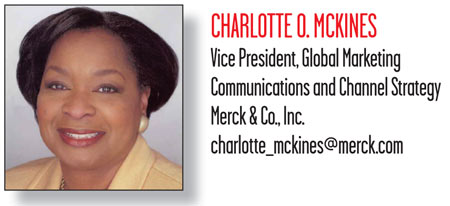
A number of methods, strategies and channels are now available to improve customer engagement. These include:
Storied, Gameful & Modular Content: This is an area where there are opportunities to not only improve relevance but also efficiency. On the relevance side, there is the opportunity to leverage the content form of stories to instill healthcare wisdom that elicits an emotional connection supporting health-enhancing customer action. Additionally, gamification can be effective in instilling a sense of playful cooperation and accountability in the customer journey towards wellness.
On the efficiency side, the opportunity exists to modularize content that reduces cost and production cycle times while also increasing the ability to repurpose and customize content components based on customer preferences. Together, these have the potential to transform the way we educate and support customers while also improving the effectiveness of our own investments.
Integrated Channels: Over the last several years, the industry has done a good job of expanding channel investments. The next challenge in the channel area continues to be integration so as: 1) to field smarter channel mixes based on individual customer preference, 2) to provide greater opportunity for seamless channel switching—between personal and non-personal and vice versa—as a means of customer choice and convenience, and 3) to meet customers in every relevant channel context they live and work on throughout the day, from browsing to researching, decision making to adhering, and communing with peers—whether at their desktop and big screens or with phones and tablets.
Personalized Experience: The right merger of relevant content, integrated channels and data driven segmentation will allow us to continue to evolve the degree to which we can produce personalized customer experiences based on customer understanding. Such customer-centric experiences will enable access to information and support offerings in appropriate contexts throughout the customer’s daily workflow and lifestyles. This personalization, done right, promises an acceleration in improved healthcare outcomes.
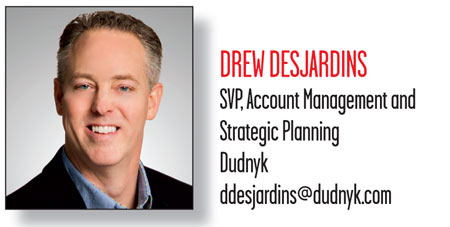
Two keys to success for any brand strategy are flexibility and adaptability. As boxing champ Mike Tyson once said, “Everyone has a plan until they get punched in the mouth!” You must have a brand plan, but like any champion fighter, you need to be able to move quickly and decisively when the punches start flying.
After you carefully craft your brand strategy and begin to execute against it, you’ll invariably encounter things you didn’t plan for. Perhaps you didn’t get the formulary access you expected, or a key clinical trial publication was not as strong as you thought it was going to be, or healthcare professionals are simply not as enthusiastic about your new drug as projected. How you react to these circumstances is often more important than how you originally imagined your plan.
Several things can help ensure that you stay on track and achieve your brand goals. First, keep your positioning front and center. While it might be necessary to make strategy adjustments to meet the changing demands of your customers, don’t lose sight of your long-term goal, which is to build a brand. Your positioning is the blueprint for your brand. So, much like changing a home exterior from vinyl to stucco will improve its curb appeal without changing the basic structure of the house, you can tweak brand strategy without compromising your brand’s positioning.
Second, talk to your customers as much as possible. The most effective way to react to changes in the marketplace is to anticipate them and adapt before the changes actually occur. Get out in the field as often as possible and push the research to dig deep for insights others might have missed. Finally, don’t be afraid to pull the trigger on a strategic adjustment—waiting too long to make an adjustment may be just as bad as doing nothing at all.
Today, more than ever before, the marketplace at large is saturated and products commoditized. And because of this, brands need to do even more for their customers. One way to stand out is by creating branded experiences that align specifically to customers’ needs. And this begins at the discovery stage when we mine for meaningful insights around the who, why, what, where and how of our customers, which then translate into brilliant ideas because they are relevant and they get into their skin.
Once you have an idea that fills that unmet customer need, it’s important to ensure that it manifests in the most appropriate channels. These channels are brought to bear based on insights about how customers like to engage. Only when you understand your customer’s challenges and behaviors can you penetrate the crowded marketplace. You need ideas that transcend the brand, walk in your customers’ shoes and offer a solution to their struggle. It’s not, “be clever with an alternative channel because it’s cool and has the wow factor.” If your customer isn’t there, it’s irrelevant. Ideas must be relevant first. The “wow” is having the customer feel understood.
As for a brand being productive, that’s an interesting way to look at a brand. Maybe we should draw on parallels of human beings. Work hard and work smart and you’re productive. Maybe with a brand you should work hard and work on behalf of your customer and you’ll probably be productive in today’s world. Being productive is about being able to fill customers’ unmet needs with solutions that answer their health struggle. When it comes to addressing healthcare issues, the brand is the enabler with educational tools and branded platforms that when synchronized work hard and are incredibly productive. In the end it is when a brand truly understands the customer’s need and creates branded experiences that fill it in every way.
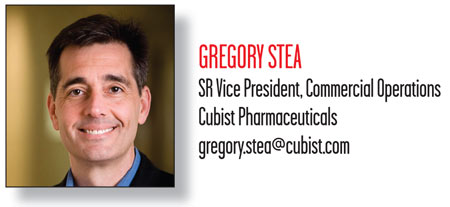
Much has been made of the idea of “customer centricity” in our business yet marketing practices continue to be product driven. While there is some ambiguity about what customer centricity means, for the purposes of this article I will define it as the delivery of insight or outcomes that enable a customer (patient, physician or health system) to do their job better. This means a marketing orientation that moves from product to outcomes; core competency from influence to customer understanding; and a selling model from reach and frequency to account management. It is easy to understand why marketing may be challenged with such an evolution, as a customer-centric strategy doesn’t start with the product but rather leads to product.
The goal then is to change the context or the nature of the relationship with the customer to one that is based on providing a higher value proposition that creates a differential level of customer receptivity. Clearly, an important part of getting this right is the need to deeply embed customers in your planning process, or perhaps better said, deeply embed yourself in your customers’ process. If one wants to truly be customer centric then it is essential to go beyond traditional market research. Marketers must instead spend sufficient time physically immersed in the world of their customers in order to better understand their objectives, challenges and frustrations.
There is also evidence to suggest that changing your context stimulates new insight and creativity. The goal, of course, is to identify those opportunities where your value proposition lines up with the job of the customer. Plans should then be collaboratively developed with customers that validate your insight. Accepting and adapting to this evolution is essential to the long-term viability of pharmaceutical sales and marketing—and becoming more relevant in the eyes of our stakeholders.
In order to get your brand to stand out in a crowded market it must be relevant and contemporary. That means your brand must be able to meet an unmet need that is related to the disease state or category.
Why? Consumers today want more than a pill; they need services and experiences that are relevant to their own distinct needs. Furthermore, media is changing faster than advertising today. We have to understand our customer’s media behavior in order to stay as relevant and contemporary as they are. If we simply repurpose a TV campaign in the digital landscape, not only will we not stand out in the crowd, we will most likely be ignored completely.
It is also important to recognize how overall branding strategy has evolved. Historically, brand strategies were just that, brand strategies. Yes we leveraged customer insights to help develop a campaign. However, at the end of the day, it was about the story that we wanted to tell to the customer. Today, it is about listening to customers and developing engagement programs that meet their needs—not just ours. A core change is truly putting the customer at the center, and not only understanding their wants and needs from a psychological perspective, but also understanding how they want to engage with us.
It also critical to understand that a consumer’s needs and emotions are unique when it comes to healthcare. Someone chooses to buy a new car, apply for a credit card, and pick where to vacation with his or her family. A person doesn’t choose to get a call from their doctor saying, “you have breast cancer,” “your child has diabetes,” or “your mother’s cancer is terminal.” Therefore, we need to help consumers solve problems, versus shop for information. This nuance is critical in developing a successful campaign and breaking through a crowded, complex, daunting and scary marketplace.
As cost constraints and time demands continue to grow in the healthcare industry, pharmaceutical marketers must strive to achieve the highest level of brand engagement across all audiences—prescriber, pharmacy, patient and payer. Our mission as marketers is to deliver the right message, to the right targets with the right frequency.
Brand engagement via the sales representative remains the cornerstone of our current efforts in the pediatric/respiratory marketplace. Our vendor partners at Strategic Edge, IMS and Quintiles have worked to support us in segmenting our targets and delivering a focused communication of the brand’s promise. We’ve leveraged both data and technology to assist in delivering impactful, near-point of care engagements with the brand. This includes the use of real-time medical claims data to assist us in identifying appropriate physicians and patients who may benefit from targeted HIPPA-compliant messaging. Through the use of MD On-Line’s Instinctive Data platform we are able to provide physicians with education, patient education, samples and co-pay cards based on their patients in their practice. The platform has helped us achieve engagement with over 80% of our targets. We’ve also just initiated a new virtual detailing pilot, iRep, to reach whitespace targets and prospects among “lost” high-decile writers whose volume has declined. Using iRep’s unique face-to-face platform, we seek to gain access to these hard-to-reach customers and to engage them with brand messages at the prescribers’ convenience.
I’m also very intrigued by the opportunities within pharmaceutical advertising to explore advances in neuroscience brain-imaging technology to measure how the brain responds to communications. Research by companies, such as Neuro-Insight, demonstrates that effective advertisements are also more impactful neurologically. The result of which is a more effective engagement and cost-efficient media spend.
Whenever I am asked the question about whether branding strategy in pharma marketing has changed, my answer is both yes and no. I believe there has been and continues to be meaningful innovation but, at the same time, despite the progress and real innovation, there are some bedrock principles that just don’t change.
First, let’s examine the innovation. Today, I am passionate about what I see as the branding of a disease, a class, a new mechanism or a pathway—very different than just product branding. Eli Lilly’s launch of Prozac—which has been documented in a Harvard Business School case study—showcased the branding of a class (SSRI), introduced new ownable nomenclature (“depression hurts”), and changed a treatment paradigm for primary care physicians. Today, pharma branding extends to clinical trials with purposeful, ownable acronyms through to disease awareness with unique nomenclature, and the distinctive visualization of the disease and molecule mechanism. All are innovative ways to communicate and establish an ownable differentiable position that is not pure product branding.
That being said, some things haven’t changed—the need for consistency in branding communication, for one. Good brands are consistent. Great brands are really consistent. As simple as that sounds, it’s harder than ever today with so many new, exciting surfaces for brand managers and their agencies to paint on. When I hear, “What’s our Facebook strategy?” I cringe. There are wonderful new tactical spaces—surfaces way beyond the old master visual aid, speaker deck and convention panels. But, now more than ever, brands need consistency in look, feel and vocabulary to make an indelible imprint on the physician, patient and payer.
The customer now drives a portion of the brand strategy due to the marketer’s increased use of digital communications. These platforms allow marketers to recognize customer behaviors and patterns while marketing to them, which sets the targets into segments. Then, once we have contact with the prospect, he/she also drives the way we market based on further profiling and customization of our communications and tactical approach.
Website experiences and CRM experiences are highly customizable. We are able to message to the particular interests of the customer, creating a more targeted and relevant experience for the individual. Today’s brand strategy is definitely moving from a demographics-based marketing world to this individualized paradigm where each customer is seen as an individual. In addition to our push communications, brand strategies now must also take this into account: The average patient comes to the table with some level of education prior to seeing the doctor. And even after visiting with a doctor, patients do additional research in order to fully understand or, in fact, buy into the prescribed or recommended treatment plan.
However, there is some room for improvisation, especially with the fast pace at which communication travels today. In our heavily regulated world it is hard to react quickly, but some companies are working hard to navigate these waters. Companies are learning how to react to the climate in a few areas, including social media and direct customer communications. But, be warned, overreacting can be devastating. All too often companies do not give their strategy a chance to “take” and make full-scale changes before they should. Instead, the focus should be on thorough research, creating a solid plan and then executing. Then, measure and revise once you know what is really working or not working.
Engagement has always begun with insights, not tactics. What’s changed is that we now have the opportunity to obtain deeper insights that were unimaginable just a few years ago. Marketing sciences provide new methods of discovery that allow us to gather intelligence.
We can now learn from the target audiences and influencers: Who is having conversations and where? What is the content? And what is the language used? We are also uncovering interrelationships between ecosystems of influencers, an aspect that is critically important in many healthcare categories.
Insights also come from understanding media consumption patterns. Our research shows that most professionals are not reducing print consumption—they are adding mobile and tablets to the mix. So it’s harder to get attention in any one place. Success lies in creating a value exchange: moving away from interruption, especially among time-starved healthcare professionals.
One solution: content. For example, you can engage healthcare audiences through media partnerships that create unique and innovative content. However, content is not a panacea; in some healthcare fields, audiences are already overwhelmed with content.
So what to do? Solve a problem for your audience. If institutional budget cuts are keeping your target from attending a leading industry conference, then bring the conference to them, virtually. Through social engagement, create virtual conversations around the right subject areas. Use actual patients in communications and engage in conversations in chat rooms in order to identify potential participants.
Don’t underestimate the power of storytelling. And take advantage of the new ways to use it. What resonates in social media is positivity—a window into a world where good things happen. And healthcare provides rich territory for doing so. In sum, engagement requires a little logic as well as some magic.



